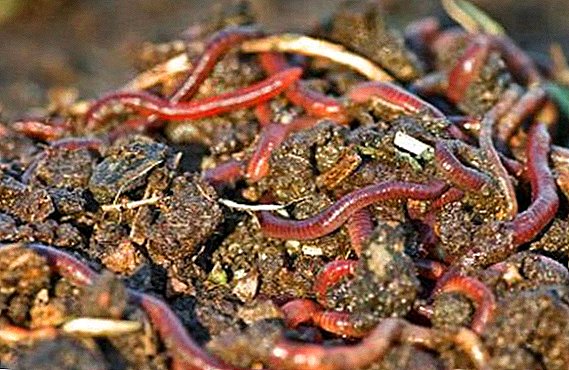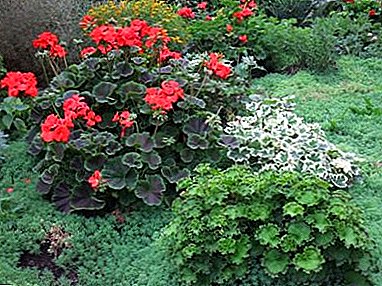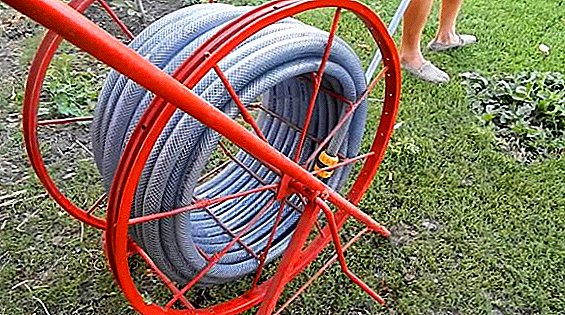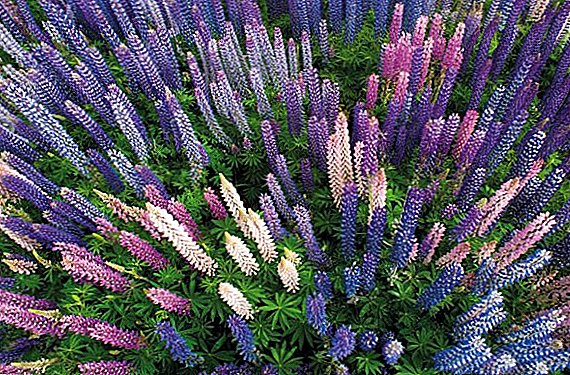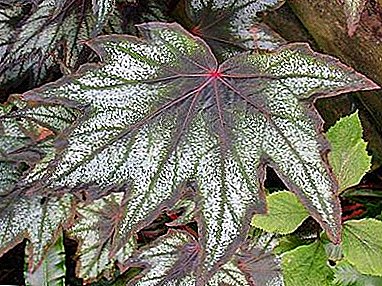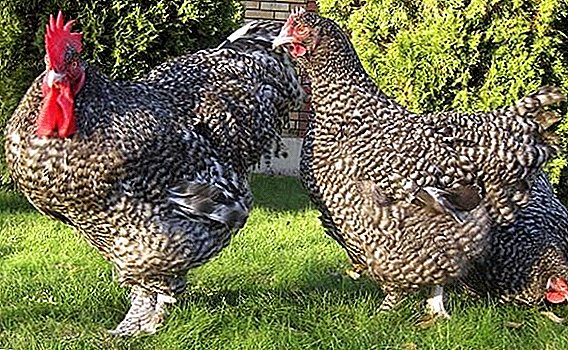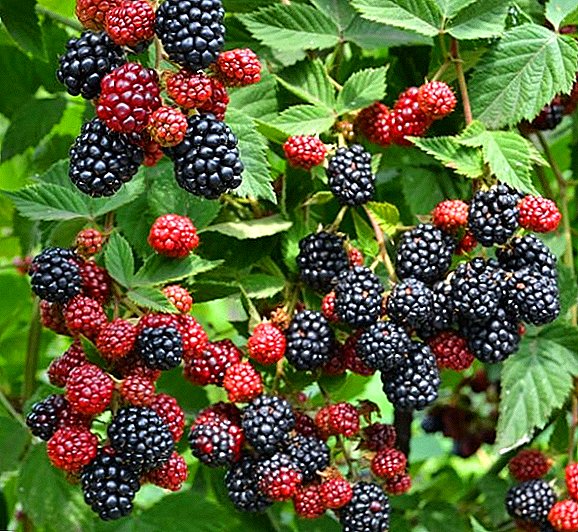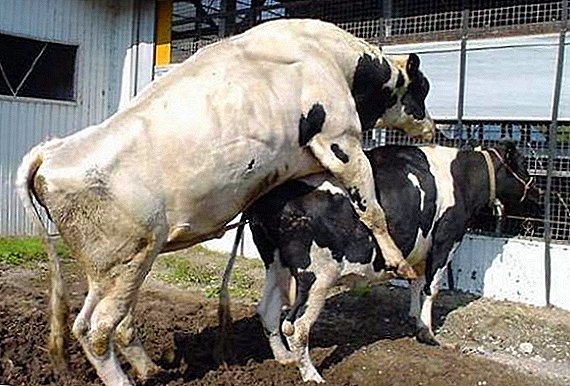 To improve the herd and quality indicators of young stock, cows should be mated correctly. It is important to choose a good sire, the method and time of insemination. Consider when and how to mate cows, and by what criteria an inseminator is chosen.
To improve the herd and quality indicators of young stock, cows should be mated correctly. It is important to choose a good sire, the method and time of insemination. Consider when and how to mate cows, and by what criteria an inseminator is chosen.
How to understand that a cow is ready to mate
Pubertal puberty depends on the breed characteristics and begins when they reach the age of 9-22 months. However, it is not necessary to happen such a young and not strong animal - it can negatively affect the offspring and undermine the insufficiently strengthened body of the female, reducing the milk yield.
Usually, cows are ready for pregnancy at the age of 16-17 months. An important indicator is that animals achieve a weight of 60-70% of the weight norms of an adult individual of the corresponding breed.
In cows that have reached puberty, estrus occurs every 17-24 days and lasts 2-6 days, and the sexual hunt itself lasts from 8 to 18 hours, depending on the individual characteristics of the animal. In the case of a female calf, the cycle begins a few weeks after giving birth, but it should again be mated or inseminated only 1.5–2 months after calving.
Find out what kind of discharge a cow has before and after calving, and also why a cow has white discharge.
An animal can only be fertilized successfully during this period, and it is important to inspect mature females 1-2 times a day in order to detect signs of estrus in time.
In this state, the behavior of the animal changes, it may be as follows:
- the cow begins to behave atypically, restlessly, mooing a lot;
- the female actively moves past herding in search of a male;
- other cows come up to such a female and lay her head on the croup or back, sniffing, licking and pushing in the area of the external genitalia begins;
- if there is a bull in the herd, the cow will not immediately let him in: first, the male will sniff it and push it in the vulva area, put its head on its back, waiting for it to allow it to climb itself;
- if the sexual hunt began in several cows, then they begin to molest each other, mooing, may begin to butt.
When you notice the above changes in the behavior of animals, then should pay attention to such physiological changes inherent in the beginning of estrus:
- the tail of the female is raised up to the side and opens the external genitals;
- the vulva is enlarged and filled with blood;
- colorless viscous discharge from the vulva occurs;
- other cows, during harassment characteristic of such a period, leave their hair ruffled on their backs and croup, and can blot the back of a cow with heat.
 If during cow grazing a sexual hunt began, and mating with a bull occurred (perhaps not even with one), then the most accurate sign of this event would be a puff of the tail due to irritation of the vagina by the male penis. This phenomenon can last more than a day.
If during cow grazing a sexual hunt began, and mating with a bull occurred (perhaps not even with one), then the most accurate sign of this event would be a puff of the tail due to irritation of the vagina by the male penis. This phenomenon can last more than a day.Seeding cows and chicks should be on the second or third day, when they have thick mucus, and they stand motionless when other animals jump on them.
Important! Cows during sex hunting can be dangerous, especially when kept alone. In the absence of other members of the herd, the female cow may attempt to climb a person. The bull also becomes dangerous, as it begins to see a competitor in such a large object as a person.
Bull picking
Puberty of bulls on average is reached at the age of 8 months, but the young male is not allowed to go to the cows until he reaches 70% of the normal weight of an adult animal. Usually, a bull is used to cover a herd at the age of 1.5 years and at first it is allowed into a small cow herd (up to 25 heads). 
When choosing an inseminating bull, the following factors should be considered:
- Parent performance indicators. A bull-father must have numerous offspring and high-quality, cow-daughter, as well as the mother of a candidate for a sementer, should be characterized by high milk yield and fat content. Considered as a good exterior, size and shape of the udder, weight.
- The external parameters of the bull, gaining body weight.
- Breed features.
- Seed quality. It is determined when the male is 12-14 months old.
- The success of conception. The bulls are beginning to reduce cows from one year of age, and the number of successful hits is counted - they must be at least 50%. When choosing from several males, they stop on a bullhead with the maximum number of successful conceptions under equal conditions.
- Score offspring. The offspring obtained as a result of the first incidents is monitored, its productive qualities are evaluated. If there is a gain in productive indicators, then the bull is considered fit for the tribe.
Did you know? One bull-maker covers 60-80 females for manual mating, and for artificial insemination, 250-400 cows. Initially, a young male is allowed to cover 60-80 individuals per year.
Ways mating
Today there are various ways of insemination of cows, but with any choice of mating animals should be planned and controlled. Close relationships should also be avoided and the pedigree of breeding animals should be traced. 
While herding a herd
The method of insemination during the grazing of the herd is rarely used in cattle breeding, it is used mainly in small farms. In this case, the bull stays the whole day with the whole herd, and is taken away for the night. Approximately 35-40 cows have one male sire. The male with this method covers all females with signs of sex hunting. If he is alone, he is given a day of rest once a week. In the herd, it is recommended to keep two males, which are changed every three days.
This method has its advantages:
- the sexual cycle is not broken;
- hunting period is not skipped;
- good results of effective insemination.
Important! For insemination in a natural way, animals should be allowed only after being examined by a veterinarian and carrying out appropriate tests. The sire needs to be examined by a doctor at least once a month.But this method has drawbacks:
- difficult to breed;
- difficult to plan insemination and calving;
- the number of sexually transmitted diseases is increasing.

Planned mating of cows
The planned mating is to comply with the mating plan, which establishes the timing of mating, the number of calvings in each month. Such planning allows you to regulate the supply of milk to customers, since during a calving period a cow does not produce milk for a period, but feeds its offspring with colostrum.
For each bull-manufacturer fix selected females in the amount of not more than 100 heads. The number of cases is controlled, which makes it possible to evenly distribute the load on the manufacturer and to prevent the rawness (absence of pregnancy) of the cows.
Did you know? Among mammals, cows occupy a second, honorable, place in terms of numbers. Only the people outnumbered them. However, if we compare the total weight of all mankind and cows, then the mass of the latter will be 3 times larger.
If the timing of mating is delayed or missed due to poor planning, this leads to the cows' barrenness, which entails poor economic performance. If calving is carried out according to the seasons, calf houses are needed, which will be loaded for 2-3 months, and the rest of the time they will be empty.
Workers will also be unevenly occupied throughout the year, downtime will begin, so proper planning of cattle mating plays a big role in successful farming. 
Artificial insemination
Artificial insemination of cows is very convenient, as it makes it possible to fertilize several females with a single dose of sperm. That is why the farms do not need to contain a lot of bulls, just one siren is enough.
Artificial method of fertilization of cattle allows you to avoid many diseases that are transmitted sexually (brucellosis, trichomoniasis, etc.).
It will be useful for you to learn more about the methods of artificial insemination of cows at home.
When conducting artificial insemination, you must adhere to the following principles:
- the insertion of sperm should take place in the front part of the vagina as close as possible to the vaginal region of the cervix, the rate of sperm injection should be in the composition of more than 10 million active spermatozoa;
- all the sperm is injected precisely into the cervix, since only 5% of viable sperm get into it;
- it is necessary to inspect and know the localization of the vaginal orifice in a cow, which has already once been shelled, because the females who have given birth after birth give rise to folds on the walls of the uterus.
Video: artificial insemination of a cow There are four main methods of artificial insemination of a cow:
- Picervical. This method is applied to nulliparous girls who do not have folds from the stretch in the vagina. It consists in the introduction of sperm as close as possible to the cervical canal and simulates the natural process of fertilization. With this method, fertility reaches 60-70%.
- Manocervical. This method consists of insemination with control using the localization of the vaginal orifice. Fertility reaches 65-70%.

- Visocervical. The process of insemination occurs under visual control of the localization of the cervix. For visual visualization using a special mirror for the vagina. Fertility is 50-60%.

- Rectocervical. Consists in insemination under control through the rectum localization of the cervix. This method is considered the most optimal, since in this case the sperm more accurately enters the cervical canal. Fertilization with this method reaches 70-75%.

Artificial insemination is good because the siren itself may not be kept on the farm, since bull sperm can be transported. It also helps to improve the breed and avoid closely related relationships. If the collected seed is cooled (up to + 2-4 ° С), then it can be stored for up to several months.
We advise you to read about what to do in case of uterus prolapse in cows after calving.
Cases of animals in the herd should be controlled, because too early pregnancy or a closely related relationship is very negative for offspring and productivity. With natural methods of mating animals should be shown ahead of time to the veterinarian.
Artificial insemination eliminates the presence and maintenance of the bull, helps to improve the characteristics of offspring and avoid sexually transmitted diseases. But with any method one should pay close attention to the herd and determine in time the period of sexual hunting in cows.





